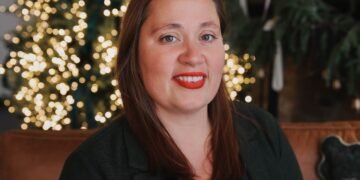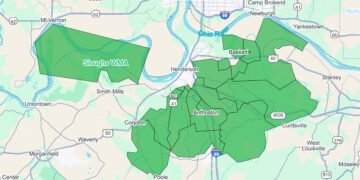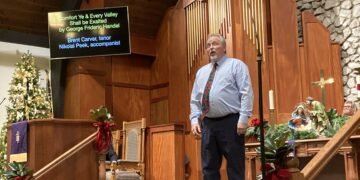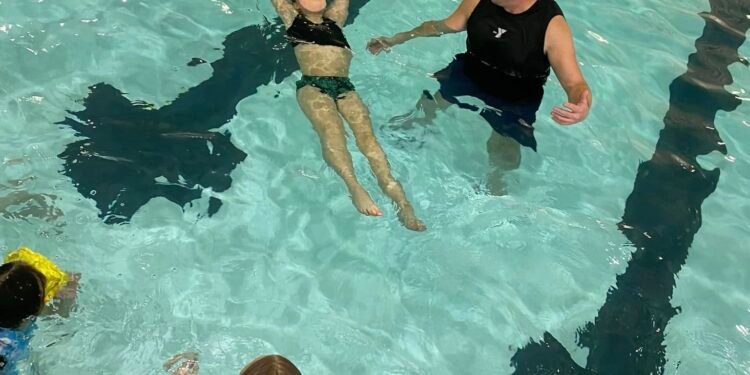Once upon a time, Henderson County Family YMCA ran a program that taught swimming lessons to all third-graders in the community as part of their school curriculum.
Many local young adults remember “graduating” back then at the Y’s pool with newfound skills that allowed them to swim and helped them stay safe around water.
This spring, with the help of community partners, the YMCA has rejuvenated and revamped that effort through a national Y program called “Safety Around Water (SAW).”
It’s a first step in equipping children with essential water safety skills. It features eight sessions that teach kids many things including what to do if they find themselves in water accidentally.
Being comfortable and confident around water is huge.
In a presentation that he uses to educate the public about the value of such a program (especially in a river community), Y Executive Director Jason Beasley noted that 60 percent of youth drowning incidents occur within 10 feet of safety.
Another statistic from the Stop Drowning Now organization notes that formal swimming lessons reduce the likelihood of drowning by 88 percent.
“Clearly, there’s a mission,” Beasley said, adding that SAW is a little different than the previous program at the Y that focused primarily on swim lessons.
“It’s a formal curriculum that builds swimming lessons into water safety,” he said. The Y received grant awards to launch SAW this spring semester from Preston Family Foundation ($10,000), Henderson Rotary Club ($2,500) and Henderson Lions Club ($1,500).
The curriculum includes a skills assessment, a kid-friendly activity workbook, instruction about how to make a 911 call and drills with repetitive verbal cues that instill quick recall in the face of emergency.
Think “Stop, Drop and Roll” for the water.
“Reach and Throw, Don’t Go,” for example, teaches kids how to assist a friend in a water emergency without putting themselves at risk. “Jump, Push, Turn and Grab” teaches the appropriate reaction if they accidentally fall into the water themselves, and “Swim, Float, Swim” tells them what to do if they become fatigued while swimming.
In the week before spring break, three classrooms of East Heights Elementary School third-graders completed the course starting with “dry land” activities and progressing to time in the pool.
At the end of week, students needed to be able to swim 20 yards unassisted and without stopping in deep water, float on their back and keep their head above water without any underwater body movement for at least 5 seconds and be able to tread water in order to “pass.”
Comparing skills assessments and end-of-course swim test results, the number of children who passed by Day 4 consistently doubled.
A bonus part of the course was Beasley’s favorite, which was teaching children in a memorable, interactive way how to make a 911 call.
He said the lack of land lines in today’s world creates special challenges with that seemingly simple task, which SAW recognizes as a need to address.
“There is a lot more intentionality in teaching general safety and water safety along with swim lessons in SAW so that it seems like one seamless effort,” he said.
Although every Henderson County elementary school was offered the opportunity to bring its third-graders to participate in the free SAW programming this spring, he said, scheduling around testing, spring school activities and other obstacles still need to be worked on to allow every student a chance.
“I hope that we eventually teach all 500 third-graders in Henderson County to swim” and be proficient in safety around water, the Y director said.
The East Heights staff learned something about why it’s important and needed, according to a comment from teacher Kelsey Beaver recorded on her class’s progress tracker sheet.
“I am so grateful for this opportunity for my third-graders,” she said. “It was evident after the first day that so many of them had little to no experience in deep water.
“I know so much was gained from this opportunity, including much needed exercise the week before spring break,” the teacher added.
The original swimming lesson program, started by Roy Pullam, Dale Osterman and Dr. Bill Rideout, was funded through the Optimist Club and began in 1988, after two children in Henderson drowned, according to Pullam. That program ceased in 2008 after the Optimist Club ended in Henderson, Pullam said.



















